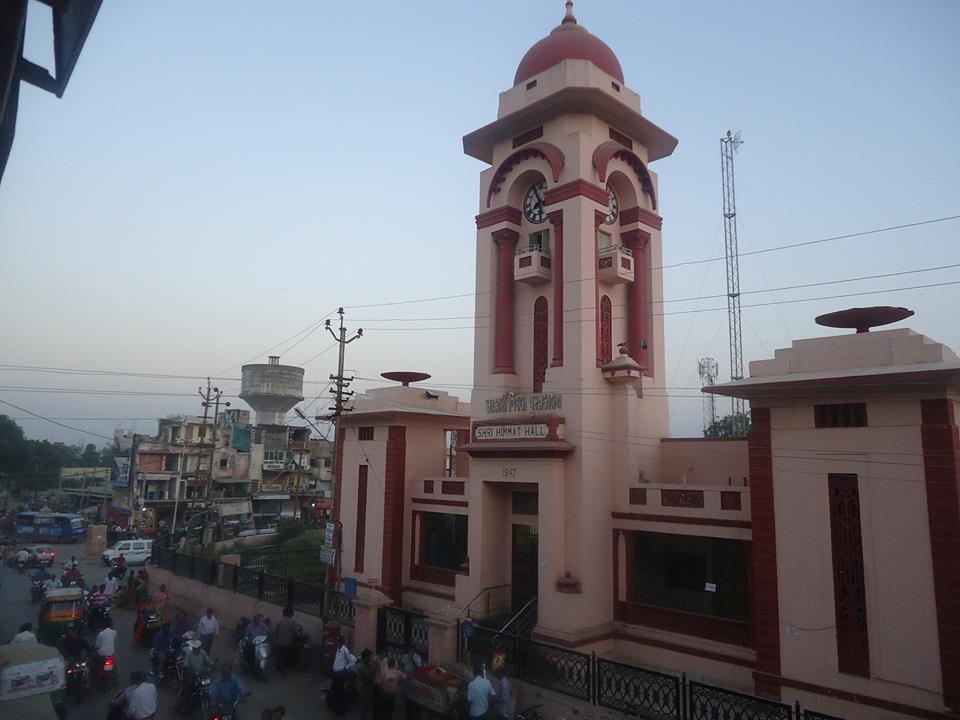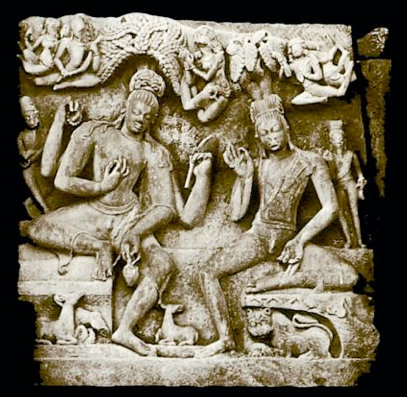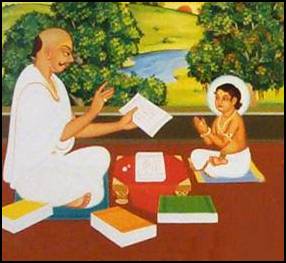|
Shri Swaminarayan Mandir, Ahmedabad
Shree Swaminarayan Mandir Kalupur ( gu, શ્રી સ્વામિનારાયણ મંદિર, અમદાવાદ, Devnagari: श्री स्वामिरायण मन्दिर, अहमदाबाद) is the first Temple of the Swaminarayan Sampraday, a Hindu sect. It is located in Kalupur area of Ahmedabad, the largest city in Gujarat, India. It was built on the instructions of Swaminarayan, the founder of the sect. As per the will of Swaminarayan, the administration of the Swaminarayan Sampraday is divided into two ''Gadi''s (seats) - NarNarayan Dev Gadi and LaxmiNarayan Dev Gadi. This Temple is the headquarters of the NarNarayan Dev Gadi. History The land for construction of this first shrine of Swaminarayan Sampraday, was gifted by the British Imperial Government. The task of constructing this pilgrimage place was entrusted personally by Swaminarayan to Ananandand Swami. This was the first temple of the Swaminarayan Sampraday constructed as ... [...More Info...] [...Related Items...] OR: [Wikipedia] [Google] [Baidu] |
India
India, officially the Republic of India ( Hindi: ), is a country in South Asia. It is the seventh-largest country by area, the second-most populous country, and the most populous democracy in the world. Bounded by the Indian Ocean on the south, the Arabian Sea on the southwest, and the Bay of Bengal on the southeast, it shares land borders with Pakistan to the west; China, Nepal, and Bhutan to the north; and Bangladesh and Myanmar to the east. In the Indian Ocean, India is in the vicinity of Sri Lanka and the Maldives; its Andaman and Nicobar Islands share a maritime border with Thailand, Myanmar, and Indonesia. Modern humans arrived on the Indian subcontinent from Africa no later than 55,000 years ago., "Y-Chromosome and Mt-DNA data support the colonization of South Asia by modern humans originating in Africa. ... Coalescence dates for most non-European populations average to between 73–55 ka.", "Modern human beings—''Homo sapiens''—originated in Africa. Th ... [...More Info...] [...Related Items...] OR: [Wikipedia] [Google] [Baidu] |
Swaminarayan Mandir Kalupur Ahmedabad INDIA 4
Swaminarayan ( IAST: ', 3 April 1781 – 1 June 1830), also known as Sahajanand Swami, was a yogi and ascetic, who is believed by followers to be a manifestation of God Krishna, or as the highest manifestation of Purushottam, and around whom the Swaminarayan Sampradaya developed. In 1800, he was initiated into the ''Uddhav'' ''sampradaya'' by his guru, Swami Ramanand, and was given the name Sahajanand Swami. Despite opposition, in 1802 Ramanand handed over the leadership of the Uddhav Sampraday to him before his death. According to the Swaminarayan-tradition, Sahajanand Swami became known as Swaminarayan, and the Uddhav Sampraday as the Swaminarayan Sampradaya, after a gathering in which he taught the Swaminarayan Mantra to his followers. He emphasized "moral, personal, and social betterment," and ''ahimsa'', and is also remembered within the sect for undertaking reforms for women and the poor, and performing non-violent yajñas (fire sacrifices) on a large scale. ... [...More Info...] [...Related Items...] OR: [Wikipedia] [Google] [Baidu] |
Dhrangadhra
Dhrangadhra () is a town, taluka headquarters and a municipality in Surendranagar district in the state of Gujarat, India. During the period of the British Raj, the city was the capital of Dhrangadhra State, one of the eight first-class princely states ( 13-gun salute) of the Kathiawar Agency in the Bombay Presidency. Etymology In Sanskrit ''dhrang'' means a stone, and ''dhara'' means the earth. It is believed that because of the strong and widespread yellow stone bedrock found immediately under the soil of the place, the town is thus named. History Dhrangadhra name originated from the word Dhunge dhara or dhingi dhara which means Stable Land. Dhrangadhra has a long history starting from Lower Paleolithic Period. The River named Falku is passing from Dhrangadhra town. The evidence come from the river bed of the Bhadar river which flows along with the Dhragadhra taluka. Moreover, there are many Harappan-period sites. Recent studies in the area suggests that the Dhragadhra and ... [...More Info...] [...Related Items...] OR: [Wikipedia] [Google] [Baidu] |
Himmatnagar
Himatnagar or Himmatnagar is a municipality in Sabarkantha district in the Indian state of Gujarat. It is the administrative headquarters of the district. The city is on the bank of the river Hathmati. History Himatnagar was founded in 1426 by Ahmed Shah I of Gujarat Sultanate and named it Ahmednagar after himself. He founded the town to keep Raos of Idar State in check. In 1658, Aurangzeb became emperor and reintroduced jizya. Through his ferman of 1665 he prohibited Jains and Hindus from closing their shops on 'Pachusan' ( paryushan), last day of the month and eleventh day; ordered that arrangements be made to ensure that Kolis of Himmatnagar do not disturb Muslims when they recite their Friday prayers. When the Rao dynasty took Idar in 1728, Ahmednagar soon fell into their hands. After the death of Maharaja Shivsing, in 1792, his brother Sangramsing took Ahmednagar and the country around; and, in spite of the efforts of his nephew Gambhirsing, became an independent chie ... [...More Info...] [...Related Items...] OR: [Wikipedia] [Google] [Baidu] |
Dungarpur
Dungarpur is a city in the southernmost part of Rajasthan, India. It is the administrative headquarters of Dungarpur District. It is the fastest developing town in the southern part of Rajasthan, alongside Aspur ''tehsil''. History Dungarpur is the seat of the elder branch of the Guhilot of Mewar family. The seat of the younger branch is that of the Maharana of Udaipur. The city was founded in 1282 A.D. by Rawal Veer Singh, who was the eldest son of the ruler of Mewar, Karan Singh.Dungarpur, History and Genealogy ''''. They are descendants of Bappa Rawal, eighth ru ... [...More Info...] [...Related Items...] OR: [Wikipedia] [Google] [Baidu] |
Corinthian Order
The Corinthian order ( Greek: Κορινθιακός ρυθμός, Latin: ''Ordo Corinthius'') is the last developed of the three principal classical orders of Ancient Greek architecture and Roman architecture. The other two are the Doric order which was the earliest, followed by the Ionic order. In Ancient Greek architecture, the Corinthian order follows the Ionic in almost all respects other than the capitals of the columns. When classical architecture was revived during the Renaissance, two more orders were added to the canon: the Tuscan order and the Composite order. The Corinthian, with its offshoot the Composite, is the most ornate of the orders. This architectural style is characterized by slender fluted columns and elaborate capitals decorated with acanthus leaves and scrolls. There are many variations. The name ''Corinthian'' is derived from the ancient Greek city of Corinth, although the style had its own model in Roman practice, following precedents set by ... [...More Info...] [...Related Items...] OR: [Wikipedia] [Google] [Baidu] |
Rajasthan
Rajasthan (; lit. 'Land of Kings') is a state in northern India. It covers or 10.4 per cent of India's total geographical area. It is the largest Indian state by area and the seventh largest by population. It is on India's northwestern side, where it comprises most of the wide and inhospitable Thar Desert (also known as the Great Indian Desert) and shares a border with the Pakistani provinces of Punjab to the northwest and Sindh to the west, along the Sutlej- Indus River valley. It is bordered by five other Indian states: Punjab to the north; Haryana and Uttar Pradesh to the northeast; Madhya Pradesh to the southeast; and Gujarat to the southwest. Its geographical location is 23.3 to 30.12 North latitude and 69.30 to 78.17 East longitude, with the Tropic of Cancer passing through its southernmost tip. Its major features include the ruins of the Indus Valley civilisation at Kalibangan and Balathal, the Dilwara Temples, a Jain pilgrimage site at Rajasthan's only hi ... [...More Info...] [...Related Items...] OR: [Wikipedia] [Google] [Baidu] |
Marathi Language
Marathi (; ''Marāṭhī'', ) is an Indo-Aryan language predominantly spoken by Marathi people in the Indian state of Maharashtra. It is the official language of Maharashtra, and additional official language in the state of Goa. It is one of the 22 scheduled languages of India, with 83 million speakers as of 2011. Marathi ranks 11th in the list of languages with most native speakers in the world. Marathi has the third largest number of native speakers in India, after Hindi and Bengali. The language has some of the oldest literature of all modern Indian languages. The major dialects of Marathi are Standard Marathi and the Varhadi dialect. Marathi distinguishes inclusive and exclusive forms of 'we' and possesses a three-way gender system, that features the neuter in addition to the masculine and the feminine. In its phonology, it contrasts apico-alveolar with alveopalatal affricates and alveolar with retroflex laterals ( and (Marathi letters and respectively). H ... [...More Info...] [...Related Items...] OR: [Wikipedia] [Google] [Baidu] |
Nara-Narayana
Naranarayana (), also rendered Nara-Narayana, is a Hindu duo of sage-brothers. Generally regarded to be the partial-incarnation (aṃśa-avatara) of the preserver deity, Vishnu, on earth, Nara-Narayana are described to be the sons of Dharma and Ahimsa. The Hindu scripture ''Mahabharata'' identifies the prince Arjuna with Nara, and the deity Krishna with Narayana. The legend of Nara-Narayana is also told in the scripture ''Bhagavata Purana''. Hindus believe that the pair dwells at Badrinath, where their most important temple stands. Etymology The name "Nara-Narayana" can be broken into two Sanskrit terms, ''Nara'' and ''Narayana''. Nara means male being, and Narayana refers to the name of the deity. Monier-Williams dictionary says Nara is "the primeval Man or eternal Spirit pervading the universe always associated with Narayana, "son of the primeval man". In epic poetry, they are the sons of Dharma by Murti or Ahimsa, and emanations of Vishnu, Arjuna being identified w ... [...More Info...] [...Related Items...] OR: [Wikipedia] [Google] [Baidu] |
Swaminarayan Temple, Ahmedabad 05
Swaminarayan (IAST: ', 3 April 1781 – 1 June 1830), also known as Sahajanand Swami, was a yogi and ascetic, who is believed by followers to be a manifestation of God Krishna, or as the highest manifestation of Purushottam, and around whom the Swaminarayan Sampradaya developed. In 1800, he was initiated into the ''Uddhav'' '' sampradaya'' by his guru, Swami Ramanand, and was given the name Sahajanand Swami. Despite opposition, in 1802 Ramanand handed over the leadership of the Uddhav Sampraday to him before his death. According to the Swaminarayan-tradition, Sahajanand Swami became known as Swaminarayan, and the Uddhav Sampraday as the Swaminarayan Sampradaya, after a gathering in which he taught the Swaminarayan Mantra to his followers. He emphasized "moral, personal, and social betterment," and ''ahimsa'', and is also remembered within the sect for undertaking reforms for women and the poor, and performing non-violent yajñas (fire sacrifices) on a large sca ... [...More Info...] [...Related Items...] OR: [Wikipedia] [Google] [Baidu] |




.jpg)



